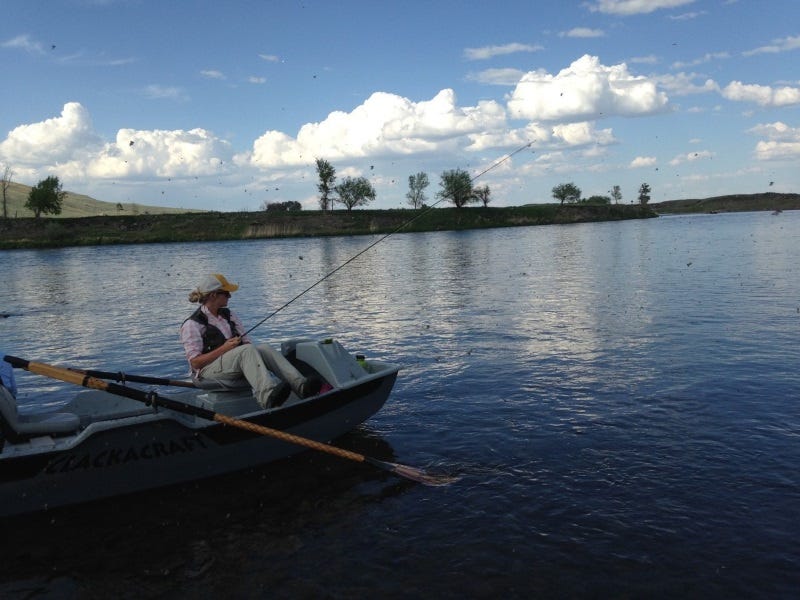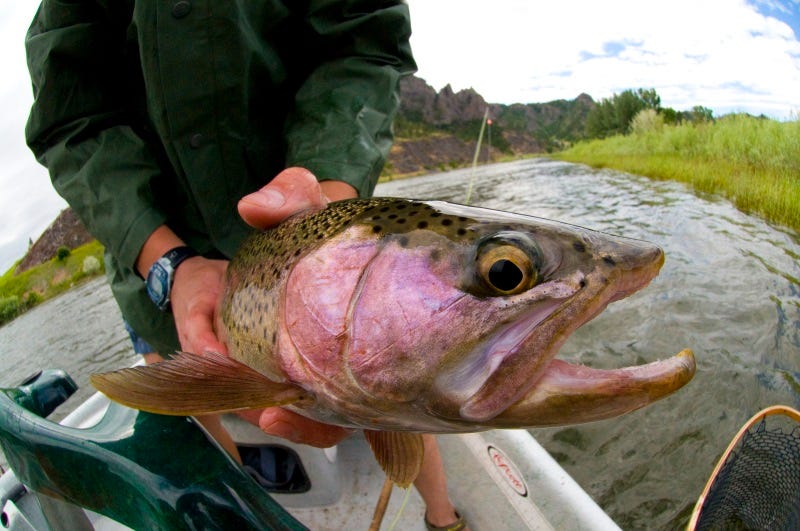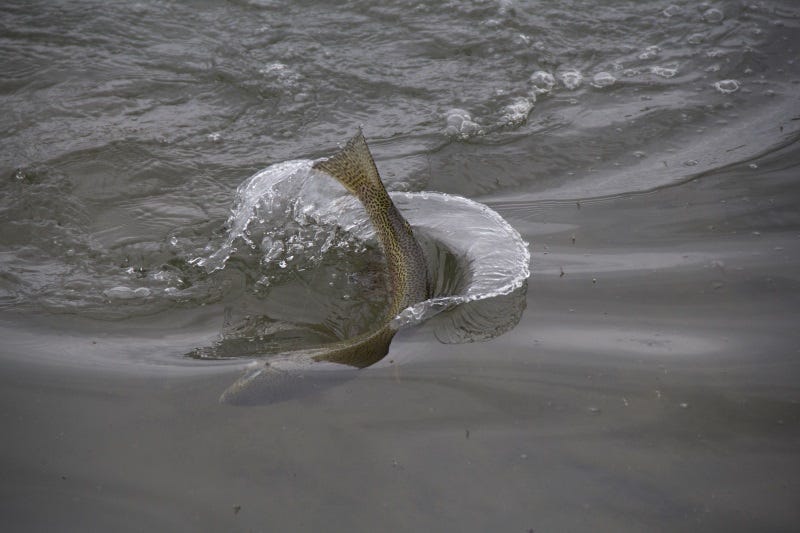Spring Fishing on Montana’s Missouri River


Individual tolerances for weather conditions vary, but in general the Missouri River is fishable for 12 months of the year. I’m one of those crazy people who still fly-fishes during the frigid days of January. Maybe that is why I appreciate spring so much. Winter fishing is good, but prolific hatches that make the Missouri River a famous destination don’t really get going until April.
Spring can be an ephemeral thing in Montana. A few warm days can be broken by a blizzard, followed soon after by a heat wave reminiscent of a mid-summer day. In the fish’s world, what really defines spring are water temperatures and bug hatches. I consider spring on the Mo to start when water temps climb between 40 and 60 degrees.
Early Spring BWOs
In the chill waters of February and March, midges are the hatch. By April however, water temps climb above 40 degrees and the blue wing olive mayflies take center stage. At times, the BWO hatch covers the water with little sails and Missouri’s trout become locked into the daily cycle of available nymphs, emergers and adults.
BWO nymphs are productive in the morning hours. Patterns such as the Green Machine, Crust Nymph, Radiation Baetis and JuJu Baetis are some shop favorites, with size 18 being the most popular choice. Emergers, like the BWO Magic Fly, and soft-hackles, such as the Pulsating Emerger, can be effective before the early afternoon hatching periods. When it’s time to go dry, lots of patterns work, as long as they are low-riding parachute styles, which are required for success.
As if the BWO’s are not enough to make dry-fly anglers happy, March brown mayflies soon crash into the BWO party. While fewer in number, their larger size usually draws plenty of attention. Gentle sips can turn into swirling rises worthy of a steelhead. If it’s quiet and you close your eyes, you can hear when the March browns are in the drift.
Pheasant-tails work well for matching March brown nymphs, though the same BWO patterns in size 14 can fit the bill. Good old Partridge & Peacock or Partridge & Pheasant soft-hackles find favor in the pre-hatch window. I often deploy a #14-16 Purple Haze, Purple Adams or Purple Rooster when duns are on the water. If the hatch is strong, an official Parachute March Brown is a great choice.

Spring Caddis
By mid-May, 50 degree water sets off the caddis. Sometimes they even come off big time on Mother’s Day like they are supposed to. One thing’s for sure, they will come off big some days and a good caddis hatch is hard to beat for getting lots of fish to eat on or near the surface.
Pupas and soft-hackle fishing can be excellent if you can manage to fish before a big hatch. Sometimes it’s hard to know when that will be, but give them a go mid-morning on any given day in May and you might have a great session of tight line grabs.
One of my favorite patterns is the TFP Party on Top. At first glance, it might look like an Elk Hair Caddis, but underneath the wing are layers of partridge and CDC. The body is smooth and stays glued to the film. It seems to be just the ticket for picky Missouri River trout.
In the evenings, when the sun is off the water, the magic happens. Clouds of caddis spread across the water to mate and bring lots of fish to the top. Late in the day, I like to fish a TFP Hi-Vis Spent Caddis. While the fish are not always easy, you typically find plenty of risers to target.
The First Hatch of Summer
As spring rolls into summer, things remain good and arguably get even better. By early June, 60-degree water blows up with PMD mayflies. At this time of year, you can usually ditch the waders and slip into refreshing water, whenever and wherever you choose. You’ll find PMD’s in the middle of the day and caddis in the evenings. When the PMDs come off, it’s a great time to be a fly-fisher on the Missouri River.

Tippets, Leaders and Presentations
When it comes to fishing small dry flies, I like using a 9-foot 4X tapered leader and adding a couple feet of 5X fluorocarbon tippet. With the larger March browns and caddis, I sometimes opt for 4X, but generally 5X fluoro tippet garners the best drifts and the most attention from the fish.
When fishing from a boat, anglers generally fish their flies downstream toward rising fish. When a good pod of steadily rising fish is spotted, boats are anchored so that flies can be fished down, fly first to individual rising fish. Stealth is generally required and putting the line or leader over fish often ends your chances of an eat.
While wading, fishing downstream is still the general plan, but if you are targeting a bank-sipper, you will need to place your fly right on their head with an upstream cast. You may only get one good shot, so make sure your cast is on target.
On the nymphing side, I like to start with a fresh 7.5-foot 3X leader. I add 18 inches of 4X fluorocarbon to my first fly, usually a scud or sowbug pattern. From the bend of the scud, I add another 18 inches of 5X and a midge pupa or a slender little mayfly. A "B" shot or two goes above the first tippet knot and gets the flies down. Fix your indicator of choice to the main leader approximately 6 feet above the shot and adjust as necessary.
